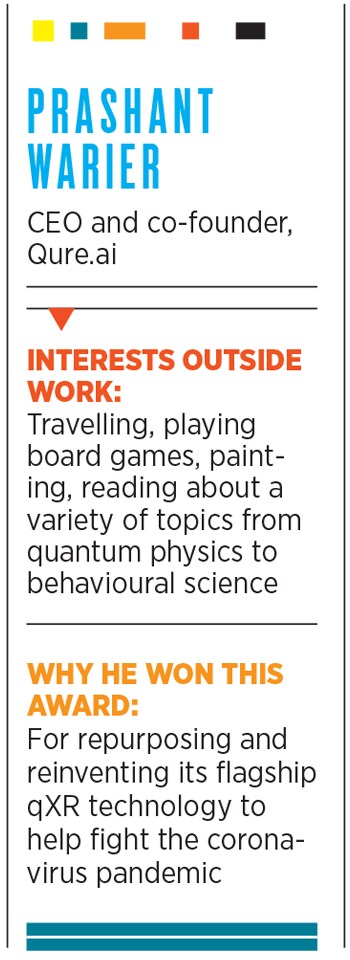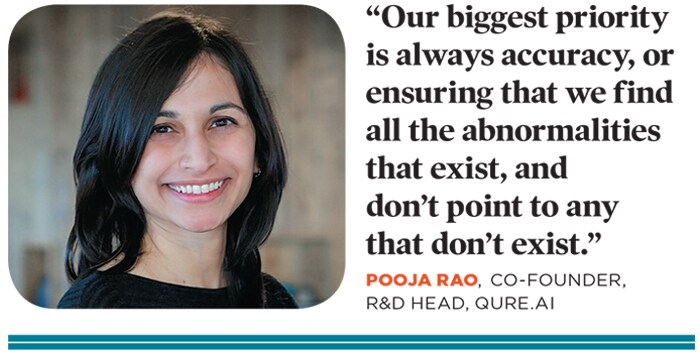FILA 2021 Covid-19 Innovator: Prashant Warier, pivoting on point
The founder & CEO of Qure.ai repurposed the technology of his startup to help detect Covid-19 cases rapidly and in remote areas
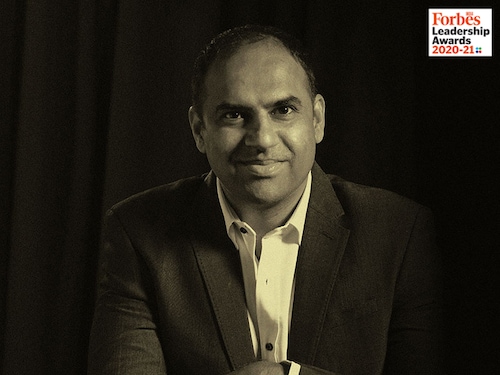

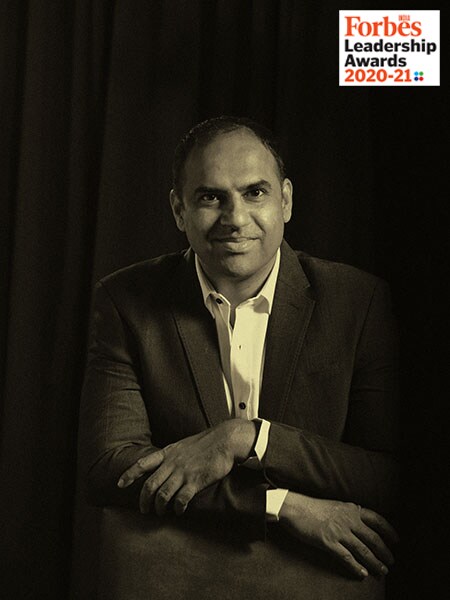 Prashant Warier
Prashant Warier
Image: Mexy Xavier[br] Around April 2020, when Covid-19 was spreading across the country, Madhipura Christian Hospital in Madhepura, Bihar, was admitting close to 140 patients every day, of which 25 carried Covid-like symptoms. There was no way of confirming these cases with traditionally recommended tests due to the lack of testing facilities.
In such hospitals, Qure.ai’s qXR technology—it uses artificial intelligence (AI) and machine learning (ML) to interpret digital X-rays within seconds—was being used to detect Covid-19. Unlike most other hospitals where this was used only as a preliminary test, a doctor at Madhipura Christian Hospital says, “For us, this software became our go-to mechanism to identify patients with high risks of Covid-19.”
For patients from Madhepura—an hour and a half away from the India-Nepal border—not only was it expensive, but also not feasible to travel to distant testing centres. “The software made it easier for us to segregate high-risk patients in a different ward, and treat them accordingly. It was extremely reliable and the algorithm was quite precise,” the doctor adds. Madhipura Christian Hospital was one of the many hospitals in rural India that used Qure.ai’s qXR technology as the only form of Covid-19 testing.
Shift in focus
As soon as the pandemic hit, Prashant Warier, CEO and co-founder of Qure.ai, was worried. He knew business was going to be slow for six to eight months. To make matters worse, he says, “we had just raised our latest round of funding—$16 million from Sequoia Capital and MassMutual Ventures—in February. We knew business would suffer and had to figure out how to sustain during this period.”
The algorithm was programmed to detect Covid-19, after which a patient’s X-rays would be automatically uploaded to the cloud, and within seconds the results would show if the patient had Covid-19 abnormalities or not. As a preliminary test, the X-ray would determine which patient needed an RT-PCR or antigen test. “As an R&D team, our biggest priority is always high levels of accuracy, or ensuring that we find all the abnormalities that exist, and don’t point to any that don’t exist. For Covid-19, there was the additional urgency to develop a solution on time for it to be useful to health care workers,” says Pooja Rao, co-founder and R&D head, Qure.ai. This was especially useful at a time when the government was struggling with testing infrastructure. Additionally, a lot of doctors were using the qXR technology as a pre-read for radiologists and other physicians.Apart from qXR, the health-tech startup expanded its offerings during the pandemic. Warier and his team launched qScout, an AI-based chatbot that tracked people while they were at home. “It would engage with people every day and collect relevant data points such as symptoms, risk groups and demographic information it would note symptoms twice a day,” adds Warier. The idea was to triage patients at home, and determine who needed to be brought in for testing or to be admitted to a hospital. This solution was adopted by the Ministry of Health in Oman.”
“We were surprised at how quickly Qure.ai managed to repurpose its qXR solution for the interpretation of chest X-rays to allow for screening and progression monitoring of Covid-19. In addition to this, a complementary suite of tools for contact tracing was also created. These were globally deployed across multiple sites, all fully remotely,” says Ryan Collins, managing director of MassMutual Ventures, which has invested in Qure.ai. The company has grown by 12x compared to pre-Covid numbers.
Additionally, the team came up with a solution called qTrack to help frontline workers be faster on the field. In remote areas, where there are no digital X-ray systems available, doctors could put the physical X-ray on the view-box and click a photo of it with a smartphone. This image could then be processed by the qTrack app.
Warier is happy to have contributed to solving an issue. In Italy and the UK, the technology was used to monitor recovery of Covid-19 patients. “In Italy, for instance, we were able to help Ospedale San Raffaele identify what kind of therapeutic approach might work better for Covid-19 patients by being able to quantify the abnormalities. If a patient’s lung infection was at 15 percent in the first week, after following a therapeutic regimen, it would be at 10 percent after taking the drug, and hence help them infer that the approach was working,” he says.
How it started
Before setting up Qure.ai, Warier was running an advertising tech company called Imagna, which he launched in 2012. In 2015, he quit when the company got acquired. With an experience of 20 years in the field of AI across sectors, from fashion retail to advertising, Warier decided to dive into the field of health care.
In 2016, he on-boarded Rao, a doctor and data scientist, and started Qure.ai. “For AI to work well, a lot of data is required. I realised that radiology is one area where data is easily available. Any hospital will have a record of all X-rays and CT scans for seven years at least,” he says. Hence came the idea for applying AI to radiology imaging. Radiology is also an area that has always been fully digitised, making it easy for an algorithm to be integrated into the digital workflow.
After speaking to multiple radiologists, the Qure.ai team decided to focus on two areas. The first was interpretations of chest X-rays. “Most often, X-rays are reported not by radiologists but general practitioners or radiographers. In even developed nations, error rates for X-ray reporting are in the range of 20 to 23 percent. We felt our technology could help improve this,” Warier explains.The second area Qure.ai decided to focus on was interpreting CT scans for diagnosing trauma and strokes via its qER product. “While doing the scan takes only a few minutes, reading it might take a couple of hours. Our technology can help radiologists prioritise read the CT scan faster by sending a WhatsApp or Telegram alert asking them to look at the critical scan immediately,” says Warier. Qure.ai received FDA clearance for this product, and the FDA study claims that the read time of the CT scan improved by 47 minutes. “AI is expected to be far more accurate compared to humans. We can only reach that kind of a performance with a lot of data, so we have to continue collecting more and more data.”
Initially, collecting data globally was tough, but over two years, they managed to collect anonymised data. “However, we realised that the algorithms looked accurate on our data sets, but when we took it to a new hospital, the performance was poor,” recalls Warier. Evidently, solving a problem through AI was challenging, even more so while teaching an algorithm how to read an X-ray, something that humans learn through years of training.
CT scans are three dimensional, making them a lot tougher for an algorithm to learn. “Developing medical imaging AI is always challenging because of the complexity and paucity of the training data. Since we’re developing tools for health care, the standards for how well the tools need to work are stringent and the stakes are much higher than for a consumer application,” says Rao. While the algorithm was ready in 1.5 to 2 years, the technology could not be launched in the market till it got FDA approvals and CE certifications. “It was only two years ago that we could finally launch the technology focusing on tuberculosis (TB) and pneumonia.” For the first three years, the company was incubated by Fractal Analytics.
In November 2018, the startup got its big break. Warier was in Geneva to meet Stop TB Partnership when he came across a project that they were working on in the Philippines. They had mobile vans, with X-ray units installed, to go all over the country screening patients for TB through chest X-rays. This was only a preliminary screening test, as the conclusive test for TB—a sputum test—is very expensive. “This is when someone suggested they deploy our solution to speed up results,” he says. “Our first contract with them was to process 200,000 X-rays. With qXR, what used to be done in five weeks, could be done in a minute.” Sputum was subsequently collected only for patients whose qXR reports showed signs of TB.
From that project in 2018, Qure.ai has come a long way, and has clients and partnerships across 35 countries. According to Tracxn, the startup was valued at $500 million, as on February 24, 2020.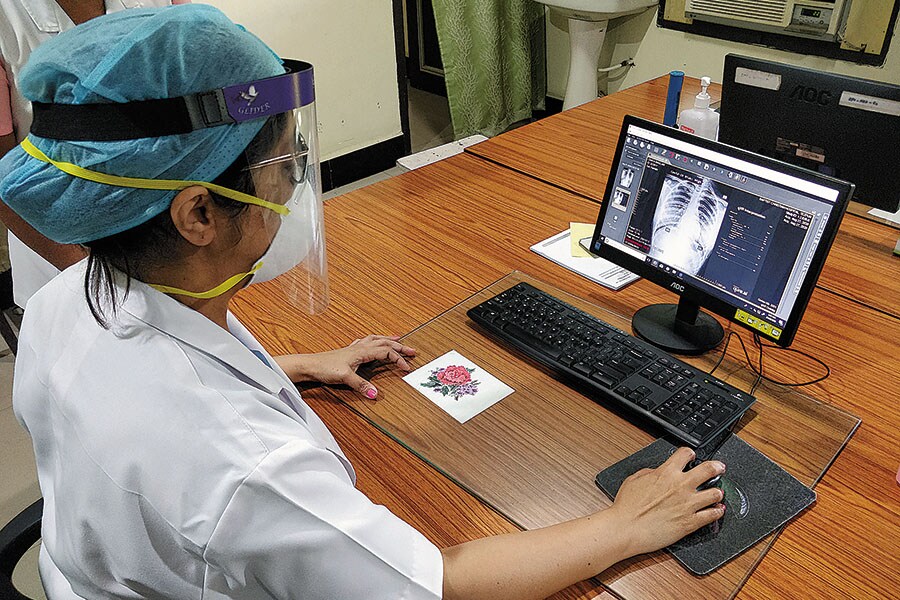 Qure.ai’s software screens chest X-rays for Covid-19 patients at a hospital in Assam
Qure.ai’s software screens chest X-rays for Covid-19 patients at a hospital in Assam
Image: Courtesy Qure.ai
Plans going forward
With Covid-19 vaccinations now being rolled out, Warier is confident that Qure.ai’s solution for TB and pneumonia will continue to remain relevant even after the pandemic. The team is working on expanding the technology to cover heart failure, lung cancer and chronic obstructive pulmonary disease.The company usually ties up with X-ray or CT scan manufacturers and medical software solutions providers. However, in December 2020, Qure.ai announced a partnership with global pharma giant AstraZeneca through which it will focus on lung cancer. “As part of this tie-up, we are working with organisations globally to ensure every X-ray that is taken will automatically be processed by Qure.ai, to avoid missing small nodules that could lead to the detection of lung cancer,” he explains.
With lung cancer particularly, late detection could lead to lower chances of survival. Warier claims, “Early detection can lead to an increase in the survival rate from 5 percent to 65 percent. Typically, drugs work well on early-stage lung cancer cases.” Qure.ai is working with the pharma company across Latin America, Southeast Asia and the Middle East. In five to six years, it hopes to create a lot of impact. The team is working on getting three more FDA clearances for various products.
Warier is pleased with the commercial success of his products, but more by the impact they have had in rural areas like Madhepura in Bihar.
The head surgeon at Madhipura Christian Hospital says, “This technology is the future of health care in India. Every patient that has come to the [Madhipura Christian] hospital for the last six months has benefited from this software, and that says a lot.”
First Published: Mar 05, 2021, 14:38
Subscribe Now